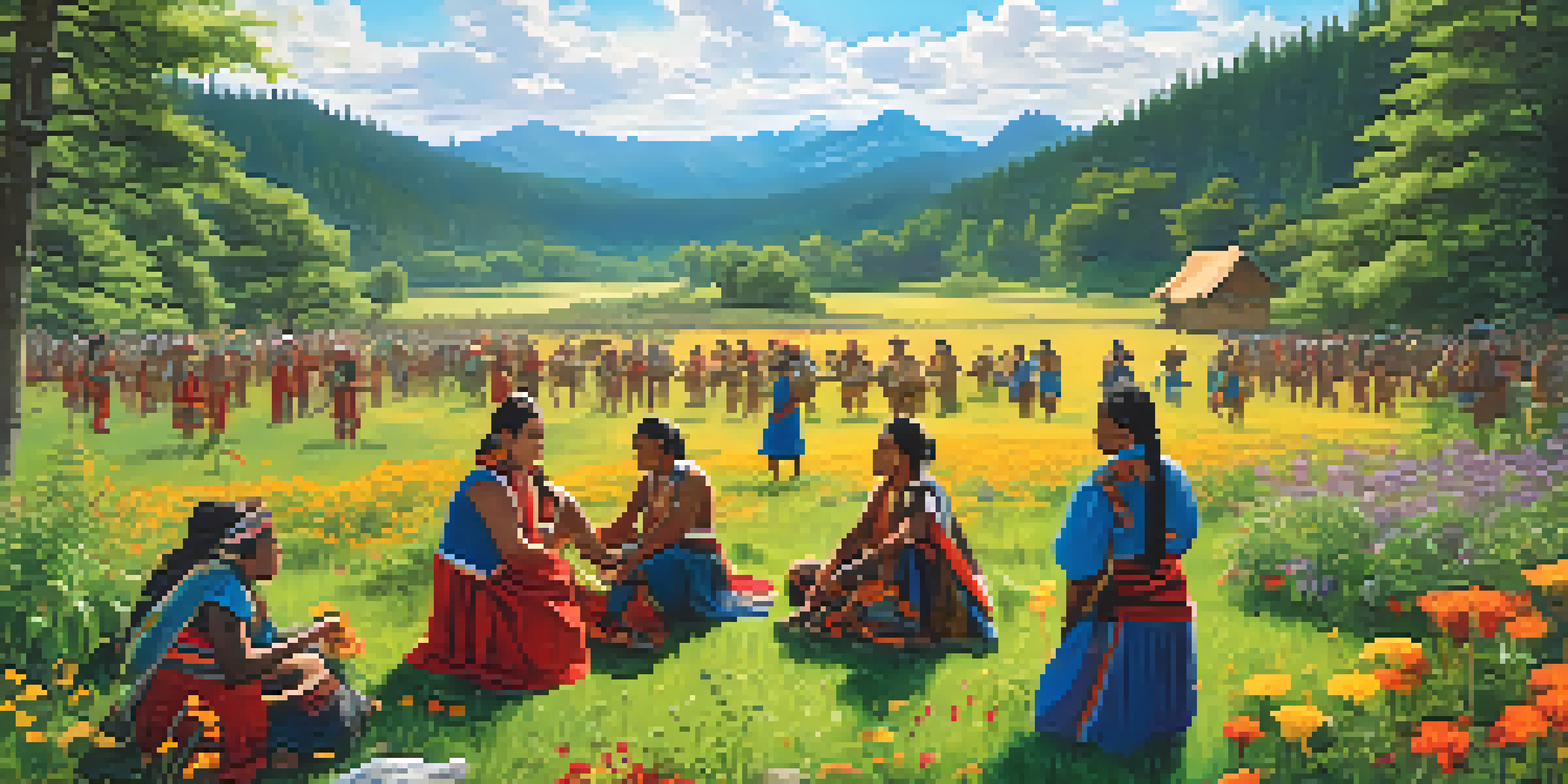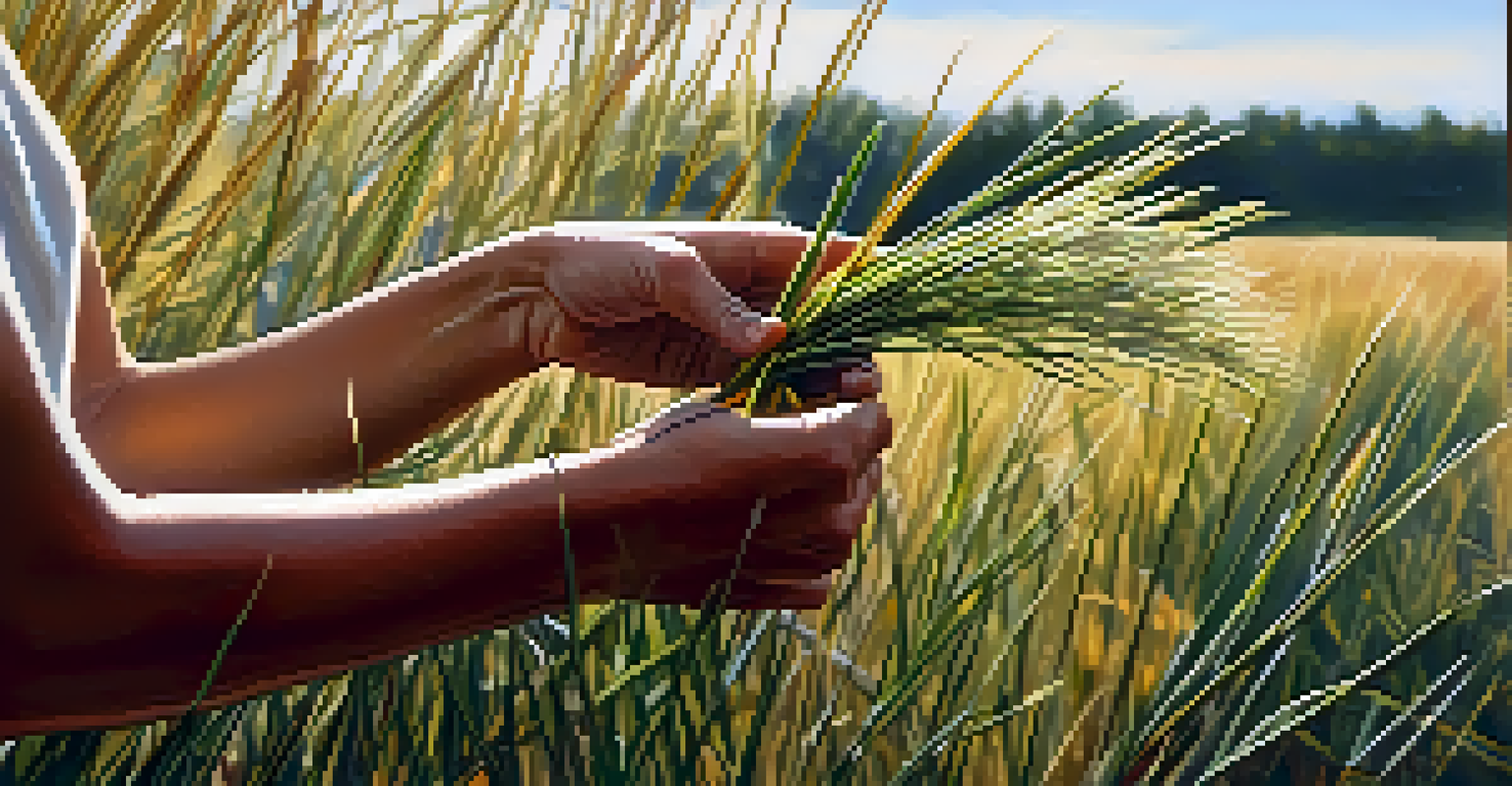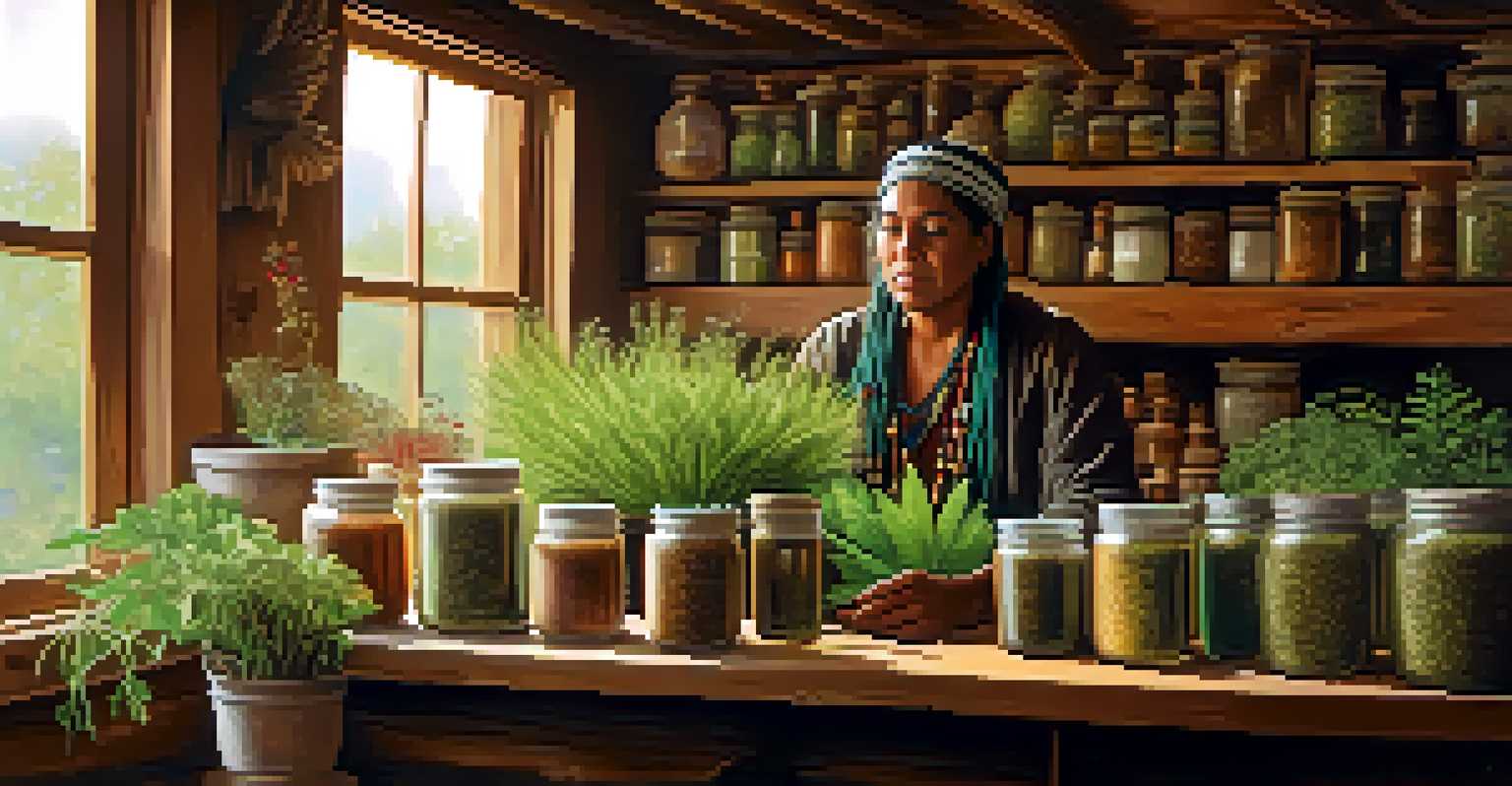The Cultural Significance of Indigenous Plant Species

Understanding Indigenous Plant Species and Their Role
Indigenous plant species are those that have naturally evolved in a specific region. They often carry significant cultural meanings for local communities, embodying traditions and histories. For many Indigenous cultures, these plants are not just part of the landscape; they are woven into the very fabric of their identity.
In every walk with nature one receives far more than he seeks.
These species serve various purposes, from food and medicine to materials for shelter and tools. For instance, the use of sage in purification rituals highlights how these plants are integral to spiritual practices. This symbiotic relationship between plants and people emphasizes the importance of preserving these species for future generations.
Understanding the role of indigenous plants extends beyond their practical uses; it also involves acknowledging their place in storytelling and cultural heritage. For Indigenous peoples, these plants often represent ancestors and traditions, serving as a bridge between the past and present.
Cultural Practices Surrounding Indigenous Plants
Many Indigenous communities have specific practices that revolve around the cultivation and harvesting of native plant species. These practices often include seasonal rituals that honor the life cycles of plants. For example, a community may gather at the start of a blooming season to celebrate the arrival of a valuable plant, reinforcing social bonds and cultural identity.

Harvesting methods are typically sustainable, reflecting a deep respect for nature. When taking from the land, communities ensure they leave enough for the plants to regenerate. This thoughtful approach not only sustains the ecosystem but also teaches younger generations the importance of environmental stewardship.
Indigenous Plants are Culturally Vital
Indigenous plant species hold significant cultural meanings, serving as a connection to traditions, history, and identity for local communities.
These cultural practices also keep traditional knowledge alive, passing down wisdom about plant uses, medicinal properties, and ecological relationships. The oral traditions surrounding these practices help reinforce the community’s connection to the land and its resources.
The Spiritual Connection to Indigenous Plant Life
For many Indigenous cultures, plants are seen as more than just resources; they are considered sacred entities. This spiritual connection often manifests in rituals and ceremonies that honor the plants and their contributions to life. For instance, the use of sweetgrass in healing ceremonies illustrates how plants are integral to spiritual well-being.
We do not inherit the earth from our ancestors, we borrow it from our children.
The belief that plants can communicate or possess spirits fosters a sense of kinship between people and nature. Many Indigenous communities view themselves as caretakers of these plants, responsible for their well-being. This perspective encourages a lifestyle that prioritizes harmony with the environment.
Moreover, these spiritual connections can influence conservation efforts. By viewing plants as sacred, communities are often motivated to protect them from threats such as urban development and climate change, ensuring that future generations can also benefit from these vital resources.
Indigenous Plants in Traditional Medicine
Traditional medicine practices among Indigenous peoples often rely heavily on native plant species. These plants are utilized for their healing properties, with knowledge passed down through generations. For example, the use of echinacea for immune support highlights how these plants have been integral to health and wellness.
Many Indigenous communities possess extensive knowledge of plant pharmacology, understanding not only how to use these plants but also when and how to harvest them. This knowledge is typically rooted in a deep understanding of local ecosystems and plant behaviors. Such expertise is invaluable for both cultural identity and community health.
Sustainable Practices Ensure Survival
The cultivation and harvesting of native plants by Indigenous communities reflect sustainable practices that honor nature and teach environmental stewardship.
As interest in holistic and natural remedies grows, the significance of Indigenous medicinal plants has garnered attention. This has led to a resurgence in the appreciation of traditional knowledge, encouraging collaborations between Indigenous healers and modern practitioners to ensure this wisdom is not lost.
The Role of Indigenous Plants in Food Security
Indigenous plant species play a crucial role in food security for Indigenous communities. Many of these plants are nutrient-dense and have adapted to local conditions, making them reliable sources of sustenance. For instance, the cultivation of wild rice highlights the importance of native crops in supporting traditional diets.
Furthermore, these plants often come with cultural significance, enriching meals with history and tradition. The act of gathering and preparing these foods is a communal activity, fostering connections and strengthening cultural identity. Sharing traditional foods during gatherings reinforces social ties within the community.
As global food systems face challenges, including climate change and biodiversity loss, Indigenous plants offer sustainable alternatives. Their resilience and adaptability are valuable assets in the quest for food security, emphasizing the need to preserve and promote their use.
Threats to Indigenous Plant Species and Their Cultures
Unfortunately, Indigenous plant species face numerous threats, including habitat destruction and climate change. Urbanization and agricultural expansion often lead to the loss of native flora, eroding the cultural practices tied to these plants. This loss not only impacts the environment but also undermines the cultural identities of Indigenous peoples.
In addition to physical threats, globalization can dilute traditional knowledge and practices. As communities become more integrated into modern economies, reliance on commercial products may overshadow the use of indigenous plants. This shift can lead to a disconnect from cultural heritage and traditional ecological knowledge.
Threats Impact Indigenous Knowledge
Habitat destruction and globalization threaten Indigenous plants and the traditional knowledge associated with them, highlighting the need for conservation efforts.
Addressing these challenges requires a multifaceted approach that includes conservation efforts, education, and community engagement. By raising awareness about the importance of indigenous plants, we can help ensure that these vital resources and the cultures they sustain continue to thrive.
Revitalizing Indigenous Knowledge and Plant Stewardship
Efforts to revitalize Indigenous knowledge surrounding plant species are gaining momentum. Many Indigenous communities are actively reclaiming traditional practices, including the cultivation and use of native plants. This resurgence is not just about preserving history; it’s about fostering resilience and sustainability in the face of modern challenges.
Community-led initiatives often focus on intergenerational knowledge transfer, ensuring that younger members learn the significance of these plants. Workshops, cultural events, and educational programs help bridge the gap between traditional practices and contemporary lifestyles. This revival of knowledge enriches cultural identity and strengthens community bonds.

Additionally, collaborations with researchers and conservationists are proving beneficial. By combining traditional ecological knowledge with scientific approaches, we can develop more effective conservation strategies that respect and honor Indigenous perspectives. This partnership fosters a deeper understanding of the role of indigenous plants in both culture and ecology.